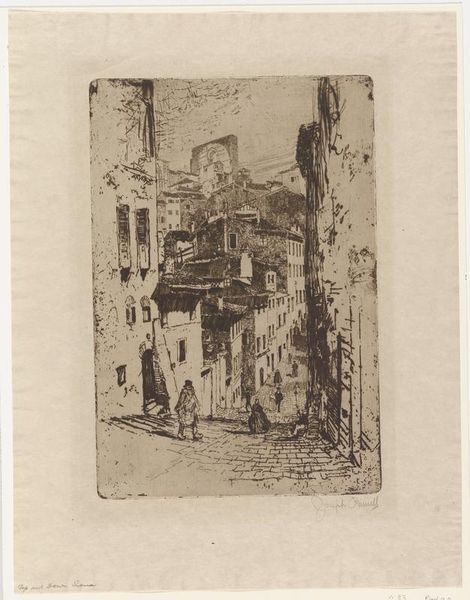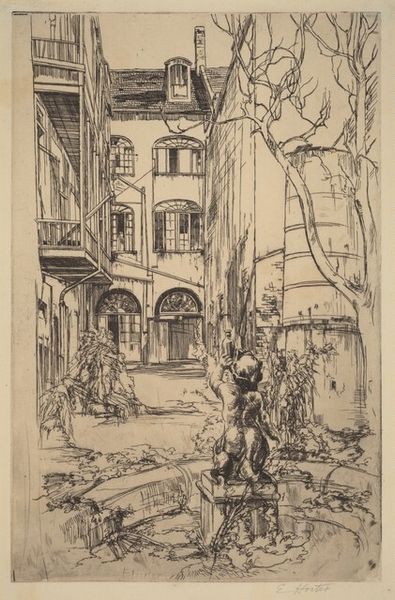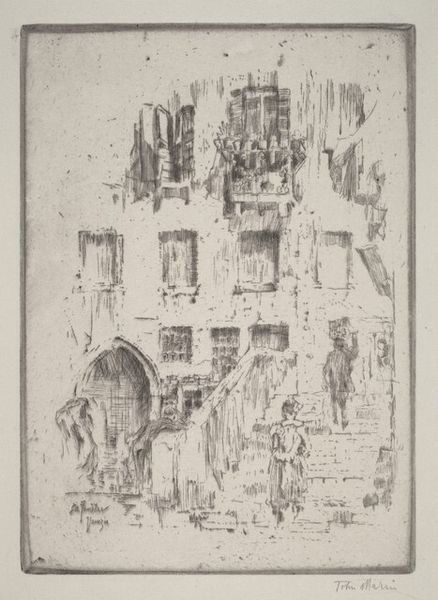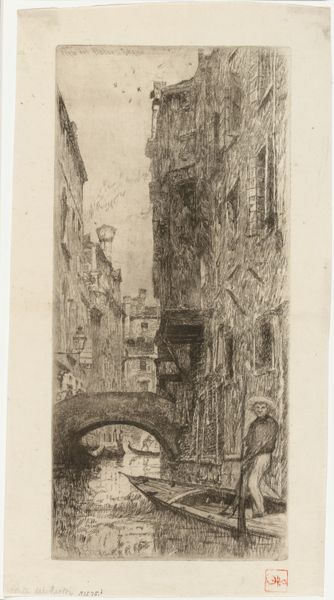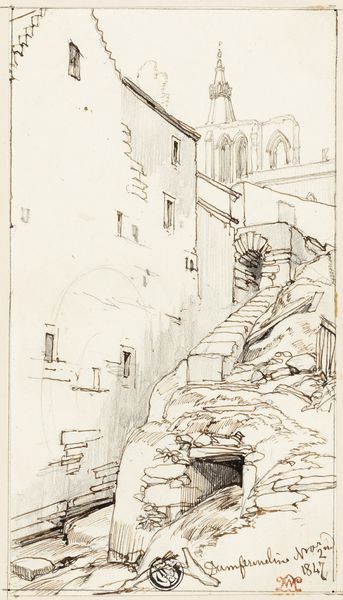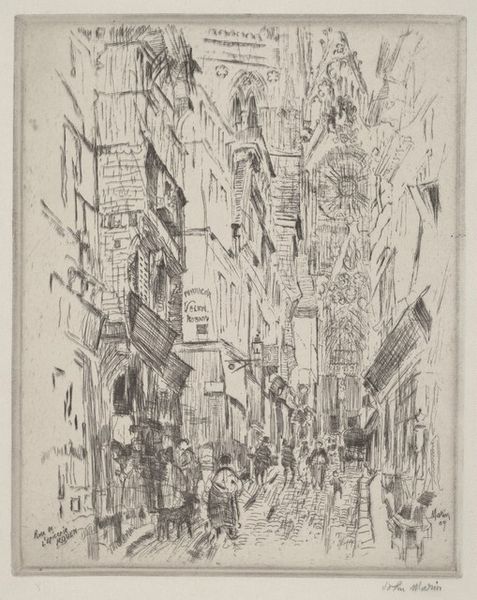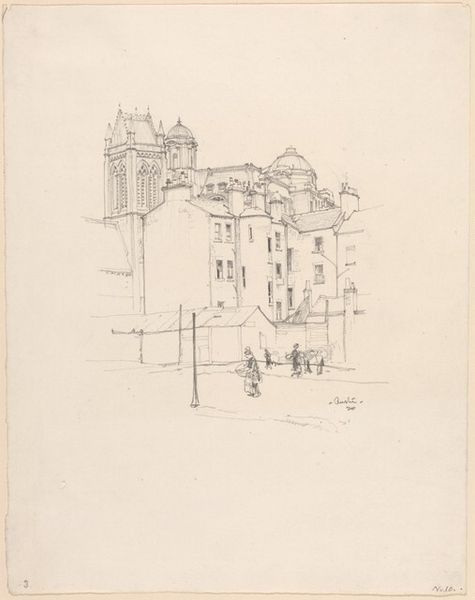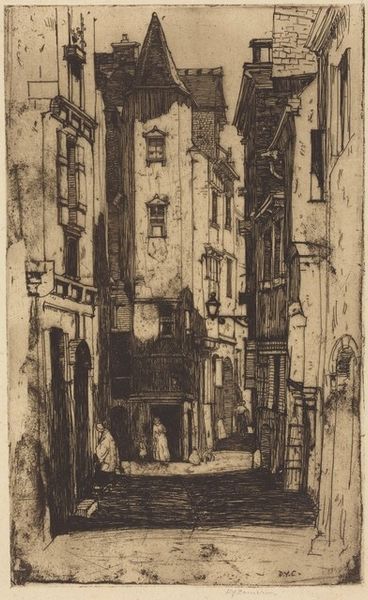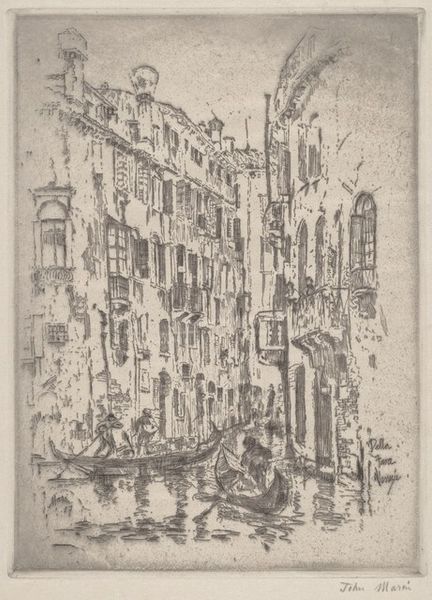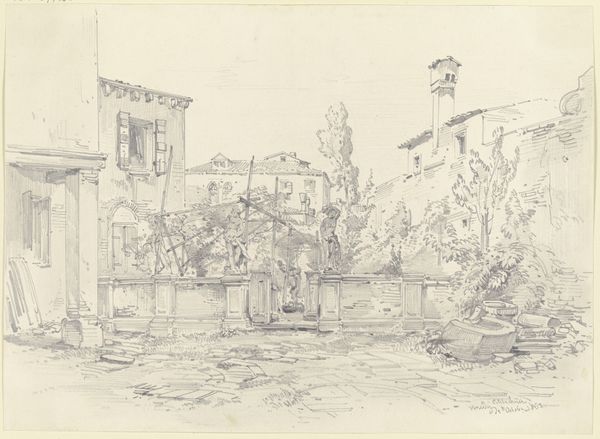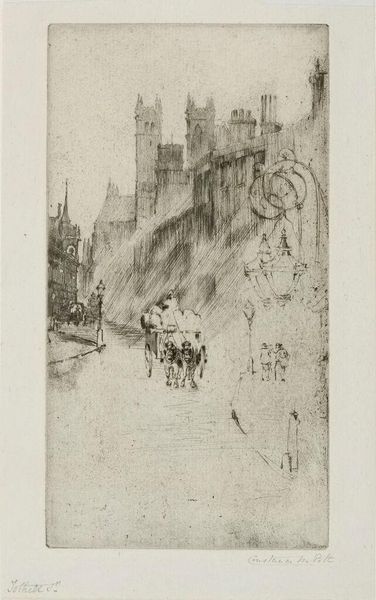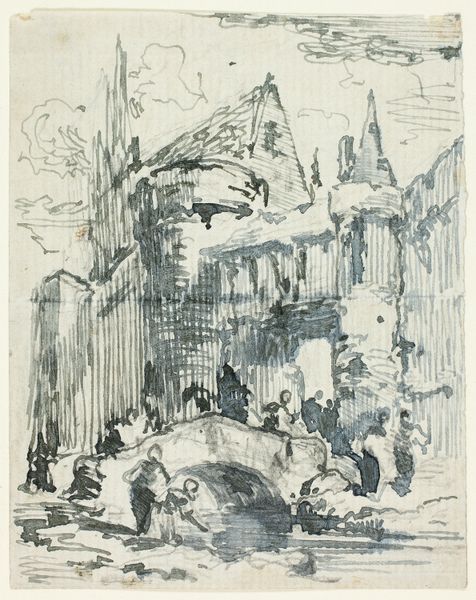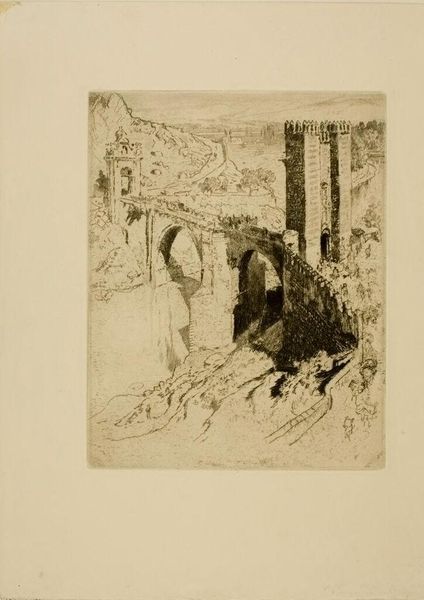
Dimensions: plate: 18 x 12.8 cm (7 1/16 x 5 1/16 in.) sheet (irregular): 29.8 x 20 cm (11 3/4 x 7 7/8 in.)
Copyright: National Gallery of Art: CC0 1.0
John Marin made this print of Venice using etching, a printmaking technique that dates back to the Middle Ages. An etcher covers a metal plate with a waxy, acid-resistant ground. They then scratch off the ground with a pointed tool, exposing the metal. The plate is dipped in acid, which bites into the exposed lines. The longer the plate is submerged, the deeper the lines become, holding more ink when printed. Here, Marin’s use of etching perfectly captures the essence of Venice: its delicate, intricate lines mirroring the city's labyrinthine canals and narrow streets. The subtle gradations of tone, achieved through varying the depth of the etched lines, evoke the play of light on water and stone. Look closely, and you'll notice the fine details – the gondolas gliding beneath the Ponte Paradiso, the architectural details of the surrounding buildings, and the bustling figures crossing the bridge. These were all carefully inscribed, requiring skill and time. Marin's choice of etching, with its labor-intensive nature, infuses the artwork with a sense of craftsmanship, elevating it beyond a mere depiction of a place. It invites us to appreciate the artist's hand and the rich cultural heritage of printmaking.
Comments
No comments
Be the first to comment and join the conversation on the ultimate creative platform.
